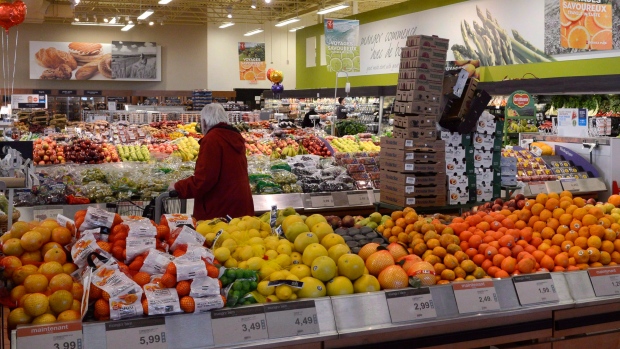Nov 18, 2016
Canada's inflation rate rises, food prices fall for first time since 2000
, Reuters

OTTAWA - Canada's annual inflation rate picked up in October as a rise in gasoline prices was offset by the first decline in food prices in nearly 17 years, but economists did not expect the figures to alter the central bank's accommodative stance.
The annual rate was 1.5 per cent, data from Statistics Canada showed on Friday, up from September's 1.3 per cent and matching analysts' expectations. The increase still left inflation below the Bank of Canada's 2 per cent target, which it renewed last month.
The core rate, which strips out some volatile items, cooled slightly to 1.7 per cent from 1.8 per cent, the lowest level since July 2014.
However, the figures garnered less attention than usual as the central bank plans to drop the gauge in favor of three different measures of core inflation. Statistics Canada will begin publishing those figures next month.
"It is pretty much in line with expectations," said Andrew Kelvin, senior rates strategist at TD Securities. "Steady as she goes."
Analysts said the muted inflation reading was not likely to change the path of monetary policy. The Bank of Canada held rates steady last month but acknowledged it had considered cutting rates for the third time in two years.
The data was slightly dovish for the bank's outlook with inflation not hot enough to quell some of the risk of a rate cut if the economy disappoints, said Avery Shenfeld, chief economist at CIBC Capital Markets.
The bank is largely expected to hold rates at 0.5 per cent when it meets in December.
The Canadian dollar strengthened slightly against the greenback following the report.
A 2.5 per cent annual increase in gasoline prices drove total inflation higher. The cost of shelter rose 1.9 per cent, the biggest increase since January 2015 due to higher costs to maintain the value of the home and a rise in property taxes.
But food prices declined 0.7 per cent on an annual basis, the first decrease since January 2000. The cost of food bought at stores tumbled 2.1 per cent in the biggest decline since July 1992 as prices for fresh fruit, vegetables, meat and dairy all fell.
A surge in food prices made headlines at the beginning of the year, as the steep depreciation in the Canadian dollar at the time drove up the cost of fruits and vegetables.


